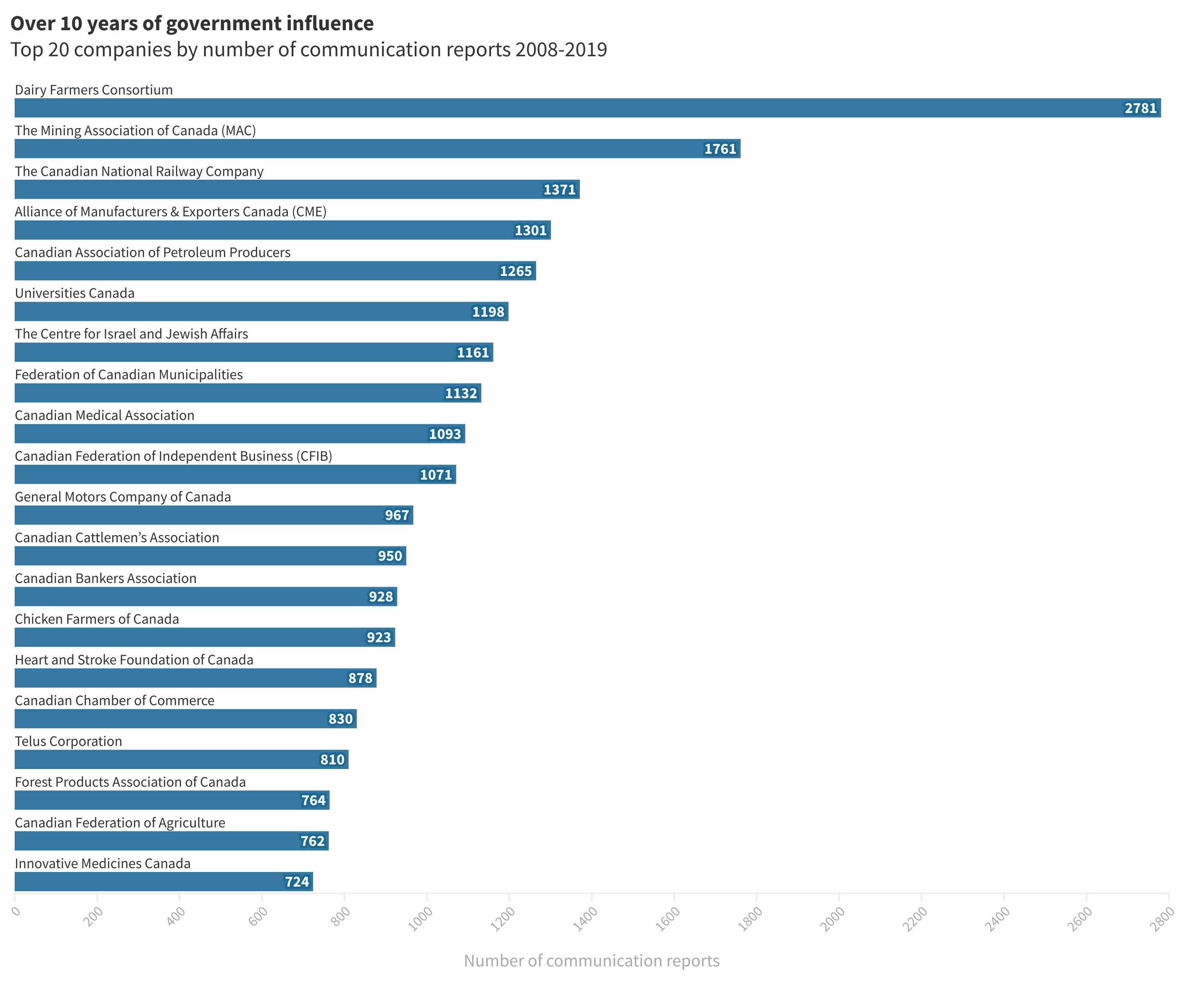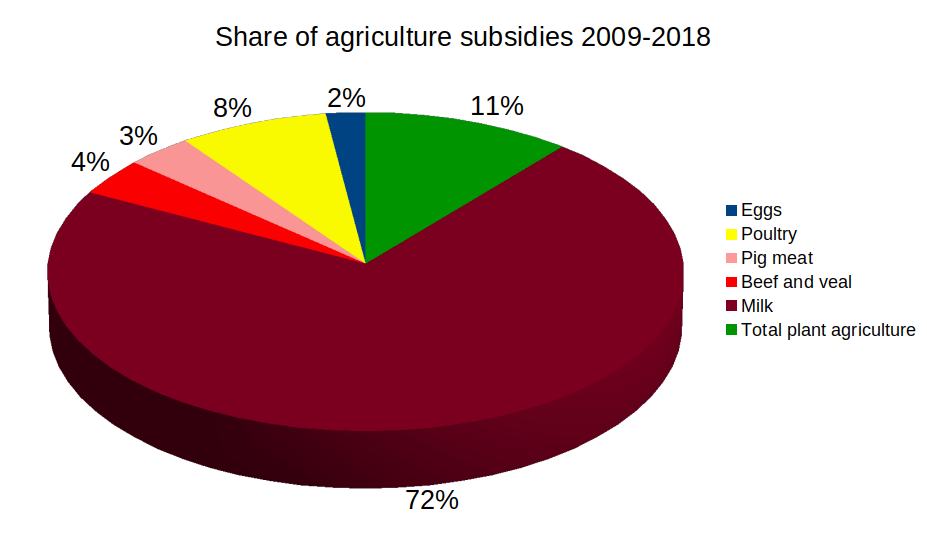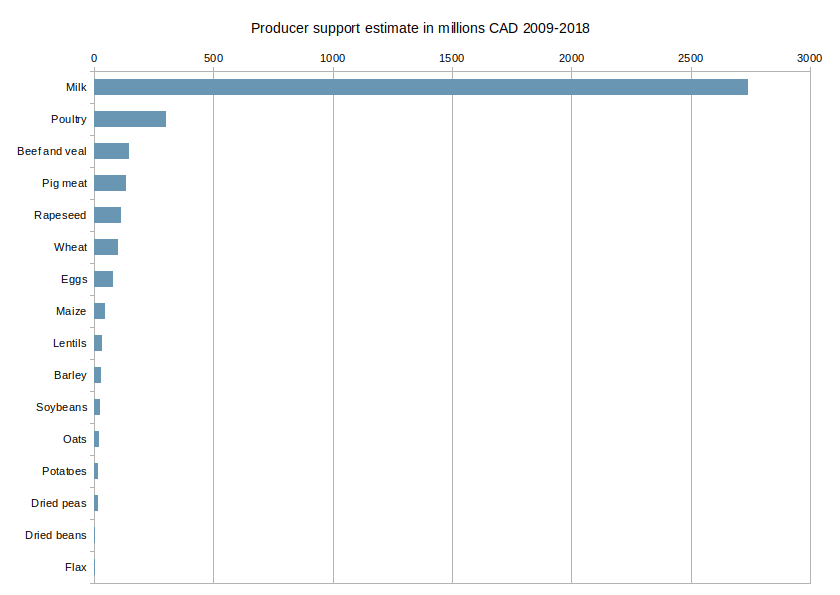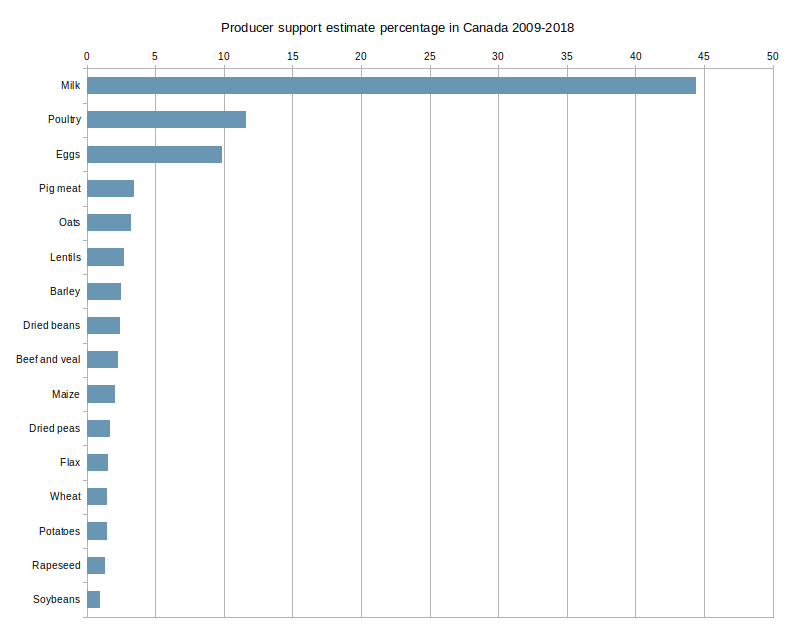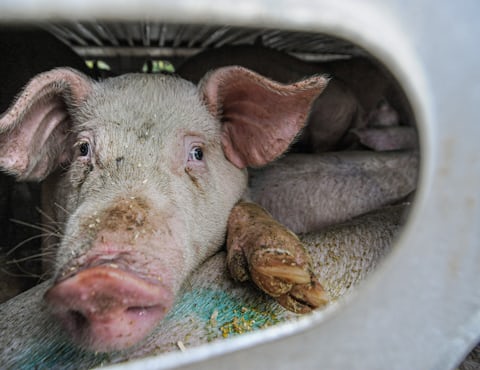Show me the money: Following the money trail of animal agriculture
Vegan Society of Canada News
Published January 4th 2020
Updated August 16th 2022
When things in our society do not make sense, it is often helpful to follow the money. In the case of tobacco, lead and asbestos it took decades before the scientific evidence reached the mainstream and countless had to suffer the consequences. The money trail of tobacco, now publicly available in history books, gives us an important piece of the puzzle as to why so many people had to die before things started to change. In the late 1920s, German scientists uncovered the first link between smoking and lung cancer, yet throughout the 1940s and 1950s various healthcare professionals like doctors where recommending we take up smoking.
Only decades later, in 1988, did Canada ban smoking in federal workplaces with Bill C-204 and some inadequate tobacco advertising restriction via the amendment of the Hazardous Products Act. It was not until 1997 that Canada passed the Tobacco Act finally properly restricting tobacco advertising and giving Canadians proper warning. This inaction resulted in the number of youth smokers reaching an all-time high in the 1990s both in Canada and the United States.
Some of those young people, and society at large, will continue paying for our unethical behavior, inaction and foolishness for many decades to come. Unfortunately, one of the major differences between the problems caused by tobacco, lead, and asbestos is that while lack of action in those cases causes more deaths, it’s never too late to eradicate those threats. With climate change and climate tipping points, inaction is likely to become irreversible. We simply cannot afford to wait decades before we act.
This brings us to the money trail of animal agriculture; let’s shed some light on the reasons why—despite being one of the major causes of climate change ; a cause of our antibiotic crisis; deforestation and loss of nature; fresh water shortage; global acidification, eutrophication, processed meat being a carcinogenic group 1 substance just like tobacco; red meat being a carcinogenic group 2A; the health concern of dairy ; the death and suffering of countless animals, including human animals; — we are still favoring the status quo. It’s imperative that we don’t wait decades or even years to act to save countless lives and our planet.
First, let’s pick up where we left off and have a deeper look at the state of the animal agriculture lobby in Canada.
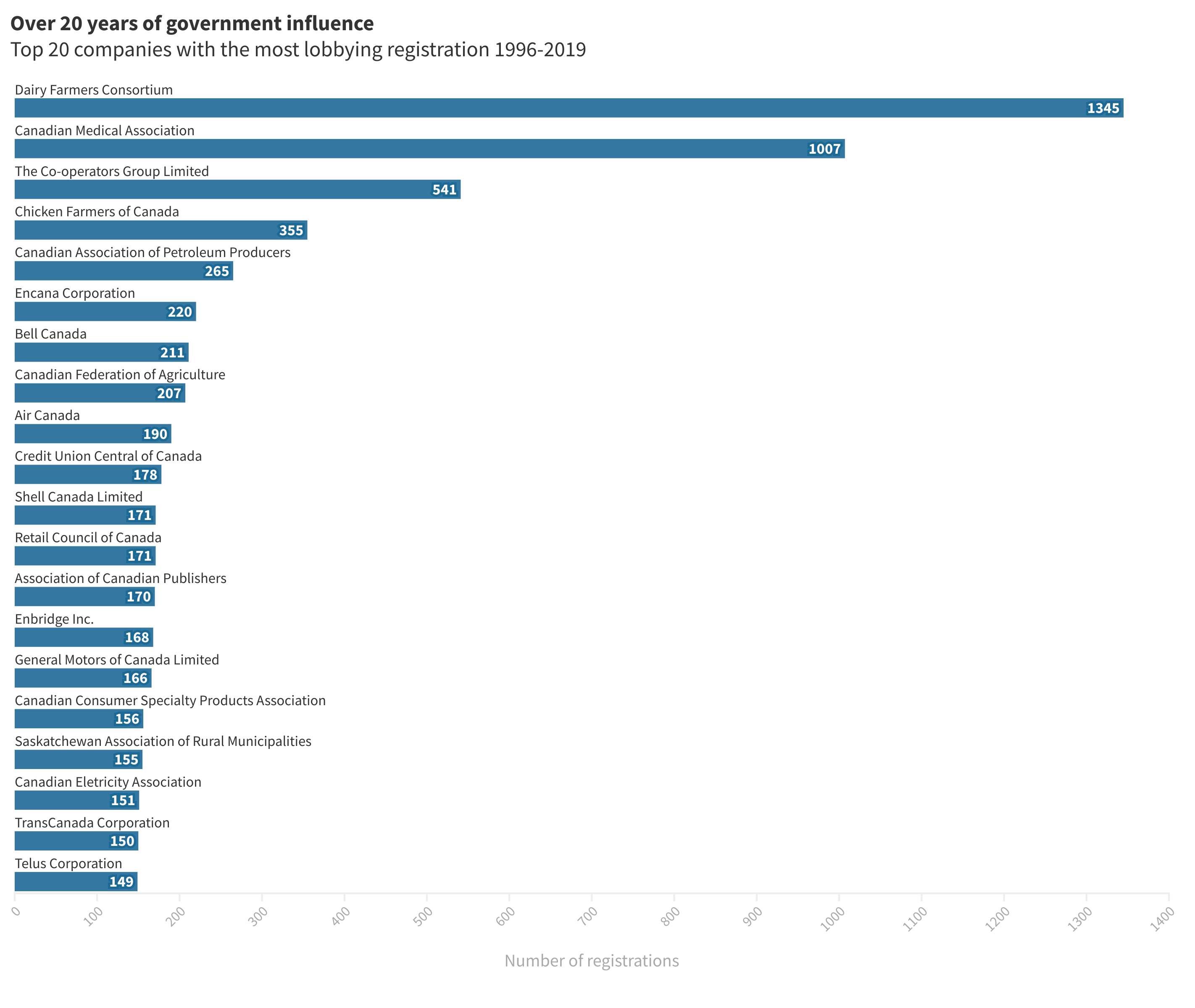
The Dairy Farmers Consortium is a fictional group including the Dairy Farmers of Canada and their provincial counterpart.
It is clear from this data that the Dairy Farmers Consortium is by far the most active lobby organization in Canada, followed by Chicken Farmers of Canada and the Canadian Cattlemen’s Association. In an ideal world, lobby organizations would have no influence on politicians but that is not the reality. Lobby organizations are not charitable in nature and they need to show their clients a return on their investments, but of course they cannot get that ROI directly or even to some degree indirectly as this is a crime in the case of government officials.
An in-depth look at bribery versus lobbying is outside the scope of this article, but for a more detailed look at lobbying in our current society see Harstad, B., & Svensson, J. (2011). Bribes, Lobbying, and Development. American Political Science Review.
Now what could the animal agriculture lobby see as a return on their investment that keeps them coming back year after year? Let’s look at the animal agriculture subsidies in Canada.
We are off to a good start as far as return on investment is concerned: 89% of all agricultural subsidies over the last 10 years went to animal agriculture. We can also observe that subsidies are divided in similar proportions to the size of the lobby effort, most of it going to dairy and chicken farming.
Now let’s have a look at 89% of what?
Over the last 10 years, we have spent an average of $2.7 billion CAD per year for dairy alone and $3.4 billion CAD per year for animal agriculture, and this is not inflation adjusted in 2019 dollars. This does not take into consideration all the infrastructure needed to support this, such as the Canadian Dairy Commission whose 2019 budget plan was another $3.77 million per year.
Please note that this data comes from the Organisation for Economic Co-operation and Development (OECD), and they do a tremendous job of keeping track of every special program that functions as a subsidy, which is no small task. Politicians are experts at disguising subsidies into friendly sounding names and hiding them in other legislation. The number of federal, provincial and municipal programs that function as a subsidy is enough to make anyone dizzy. Nevertheless, the OECD numbers are at best a low estimate as they cannot possibly keep track 100% accurately of all Canadian programs. As an example, here is a small non-exhaustive list of corporate welfare programs going to animal agriculture that either currently exists or existed in the past and were replaced by other government programs:
- Agricultural Stabilization Act – Milk (Federal)
- National Tripartite Stabilization Program – Pork (Provincial)
- Canadian Livestock Drought Assistance Programme (Greenfeed)
- Crow Benefit Offset (Provincial)
- Fuel tax refunds and rebates (Federal)
- AgriRecovery Bovine Tuberculosis Initiatives (Federal portion)
- Property Tax Exemption
- Dairy Farm Investment Program
The list goes on, and let’s not forget that $3.4 billion dollars per year is a large sum of money. In comparison, in Canada we plan to spend in 2019-2020:
- $3.5 billion dollars for the RCMP
- $2.1 billion dollars for the Canada Border Services Agency
- $4.5 billion dollars for the Canada Revenue Agency
- $2.5 billion dollars for the Correctional Service of Canada
- $744 million dollars for the Department of Justice
- $4.2 billion dollars for the Department of Public Works and Government Services
None of these are responsible for the deaths of countless human animals through cancer and workplace injuries, mass extinction, the deaths of countless living beings and the destruction of our planet.
Before we move on, let's look at another important metric: the subsidy expressed as a percentage of sales calculated at the farm gate. This is important because it gives us an insight into the nature of these programs. For example, if the percentage is 100% this means that if we work 1 day to produce something that is worth $1 and we receive a subsidy worth $1, this is in fact no more than a universal basic income program for a specific group with the additional condition that we must look busy. A percentage of 50% would indicate that our work, all other things being equal, generates values for half the year and the other half we are benefiting from a universal basic income program while we look like we are busy working.
At 44%, dairy producers have a great scheme going on. Of course as Canadians we want to provide adequate social benefits so as not to leave anyone in need. However, in this case it is certainly not because dairy farmers are some of the most financially vulnerable people in our society. A Maclean’s investigative report showed that:
The average dairy producer’s net worth is nearly $5 million, and in 2016, the average producer earned an income of about $160,000, even after operating expenses had been paid, according to the most recent numbers available from Statistics Canada. Compared to the average total income of individuals in 2016, which was $43,500, dairy farmers seem to do quite well.
With that type of deal, it becomes clearer why they have the most active lobby organization in Canada; we cannot fault them for trying to keep the status quo. In fact, they are in the top quintile of the wealthiest Canadians as measured by net worth, and the top 3 per cent of Canadian as measured by income, all the while masquerading as everyday people under economic duress who require our subsidies. This is clearly unethical, but not unusual. Throughout history, various special interest groups have benefitted from unfair advantages. The high cost, not only in terms of lives but environmental and economical as well, of farm subsidies has been discussed among political and economic scholars for years, yet until now nothing has changed significantly.
What other benefits could the animal agriculture industry get for their lobby investment? Thanks to The Globe and Mail investigation in 2017, emails were uncovered during the revision of Canada’s Food Guide from the Department of Agriculture and Agri-Food (AAFC) lobbying Health Canada seemingly on behalf of the animal agriculture industry. In an internal memo marked “secret” obtained through the Access to Information Act, the investigation uncovered that AAFC said:
Messages that encourage a shift toward plant-based sources of protein would have negative implications for the meat and dairy industries.
To our knowledge, there was no criminal bribery charge laid, but there was also no explanation as to what happened and why. It should be of grave concern to Canadians that our government, knowing everything we know today about animal agriculture, is serving private interests trying to expand animal agriculture.
Where else might the animal agriculture lobby spend their money besides politicians? Dietitians of Canada. Dietitians of Canada’s current CEO had worked 10 years for the Dairy Farmers of Canada prior to her current position, and 3 years concurrently at both. The CEO of Dietitians of Canada was paid 354,045.00 in 2015, the last data publicly available we could find, and 7 people had salaries over $100,000. That is despite the average salary for a dietician to be $60,774 in 2019, so earning $354,045 per year is comfortably in the top 1 per cent of Canadians. As an example, here is what our society views a job where the requirements and responsibilities would warrant a salary of $350,000 per annum: Prime Minister of Canada. In 2015, the salary of the Prime Minister of Canada was $336,800, not quite to the level of the CEO of Dietitians of Canada but not far behind.
Furthermore, the Dairy Farmers of Canada organization is a frequent sponsor of “Nutrition Month”, sponsoring content with recipes, and posters like the food guide printed with their logo. For “Nutrition Month” in 2019, 8 out of 10 recipes from the Dietitians of Canada included dairy. It did not seem to be a bias toward Dairy Farmers of Canada as much as it was a for-profit bias: Whoever paid more seem to get more. All 10 of the recipes were sponsored and submitted by industry group like Dairy Farmers of Canada, Avocados from Mexico, and Canola Eat Well. This isn’t surprising when an organization needs to cover a CEO salary of over $350,000 and a payroll for their top 7 employees of more than $1.1 million dollars in 2015. When an organization looks like a for-profit, acts like a for-profit, has the payroll of a for-profit and sounds like a for-profit, then it should be a for-profit. This has gotten so out of control in our society that the United States, under their current president Donald Trump, had to introduce measures to penalize nonprofits with salaries over a million dollars. New York state went even further in certain cases and capped salaries at $199,000 for those in nonprofit organizations that receive government funding. We have no such regulations in Canada and many CEOs at some of our largest charities and nonprofit organizations earn over $250,000 CAD. A discussion of the influence of for-profit corporations on the nonprofit sector is outside the scope of this article but for a primer see this article.
This is unethical and a strong conflict of interest. In Canada, unfortunately most professions and organizations are not legally bound to act in the best interest of their clients and/or the public. For example, financial advisors are not legally bound to give financial advice in our best interest. Similarly, while unethical, it is not illegal for Dietitians of Canada to serve the interest of their sponsors and/or members instead of the health of Canadians. The problem with this lack of transparency is that Canadians are not aware of the relationship between the Dairy Farmers of Canada and Dietitians of Canada. Even while doing our research, much information was not publicly available since Dietitians of Canada is not under any legal obligation to disclose their financial statements nor to be transparent. It is impossible to know the exact source of their funding, and it appears to be equally impossible for them to live up to their stated mission:
Our purpose is to advance health through food and nutrition. We provide evidence-based food and nutrition information.
It’s disturbing when 8 out of 10 recipes include dairy, in spite of evidence that suggests it contributes to the number of prostate cancer cases, as reported by the Cancer Society of Canada. Additionally, 65 per cent of the population has some form of lactose intolerance. We are not certain what “evidence-based” process they are following, but it’s not coherent with the science we are seeing published in various journals and not inline with the Canada’s Food Guide. We simply see no way to interpret the nutritional guidance of the food guide and translate this into recipe suggestions containing dairy 80% of the time.
The unethical relationships between the Dietitians of Canada and its corporate sponsors, like the Dairy Farmers of Canada, seem to spread well beyond Nutrition Month. For example, Vegan Society of Canada recently had to intervene when the CBC published false information from the Dairy Farmers of Canada repeated by a National Media Spokesperson of Dietitians of Canada. In this article, a registered dietitian and member of the Dietitians of Canada, is quoted:
In Canada, we do not allow [growth] hormones in our milk supply at all," she said, noting that Canada has "very rigorous" standards around dairy products
This is simply false. It is a scientific fact that not only cow’s milk itself but most dairy products in the world contains at least naturally occurring growth hormones in the form of IGF-1. It is hypothesized that this may be one of the reasons why dairy products may foster the growth of cancerous cells as we discussed in this article. A review of research papers and an explanation of IGF-1 in milk can also be found here. We also know Dairy Farmers of Canada knows this scientific fact since when a complaint was filed with Ad Standards that they were spreading false information in their ads by claiming “There are zero growth hormones in milk produced in Canada. Like, none,” the ads were pulled.
Conveniently, while Dairy Farmers of Canada are not allowed to spread false information through advertising, we are now saddled with Dietitians of Canada spreading the same falsehoods. We are still waiting for the CBC ombudsman to correct the article. There are many wonderful dietitians who are committed, like us, to using the best science available. However, Dietitians of Canada as an organization has much work to do to demonstrate that their actions reflect their mission.
The Dietitians of Canada are not alone; a long list of individuals and organizations take money from various animal agriculture lobby groups. For example, a report by the Dairy Farmers of Canada for 2016/2017 stated that they directly employed 31 dietitians and beside salaries spent at least 10.15 millions spread among 15 Canadian universities, 10 federal research centers, 2 international research institutions, 160 scientists, 130 students and 52 research projects. We must remember that these are just a small part of a budget of one Canadian organization, when scaled globally the number of individuals and organizations who have ties to the animal agriculture industry is staggering. A 2016 campaign reached propaganda level of disinformation when sponsored content was disguised as a health-information campaign with the Heart&Stroke foundation logo, telling Canadians that to reduce their risk of high blood pressure they must “Eat more vegetables and fruits and make sure you get enough milk products.”
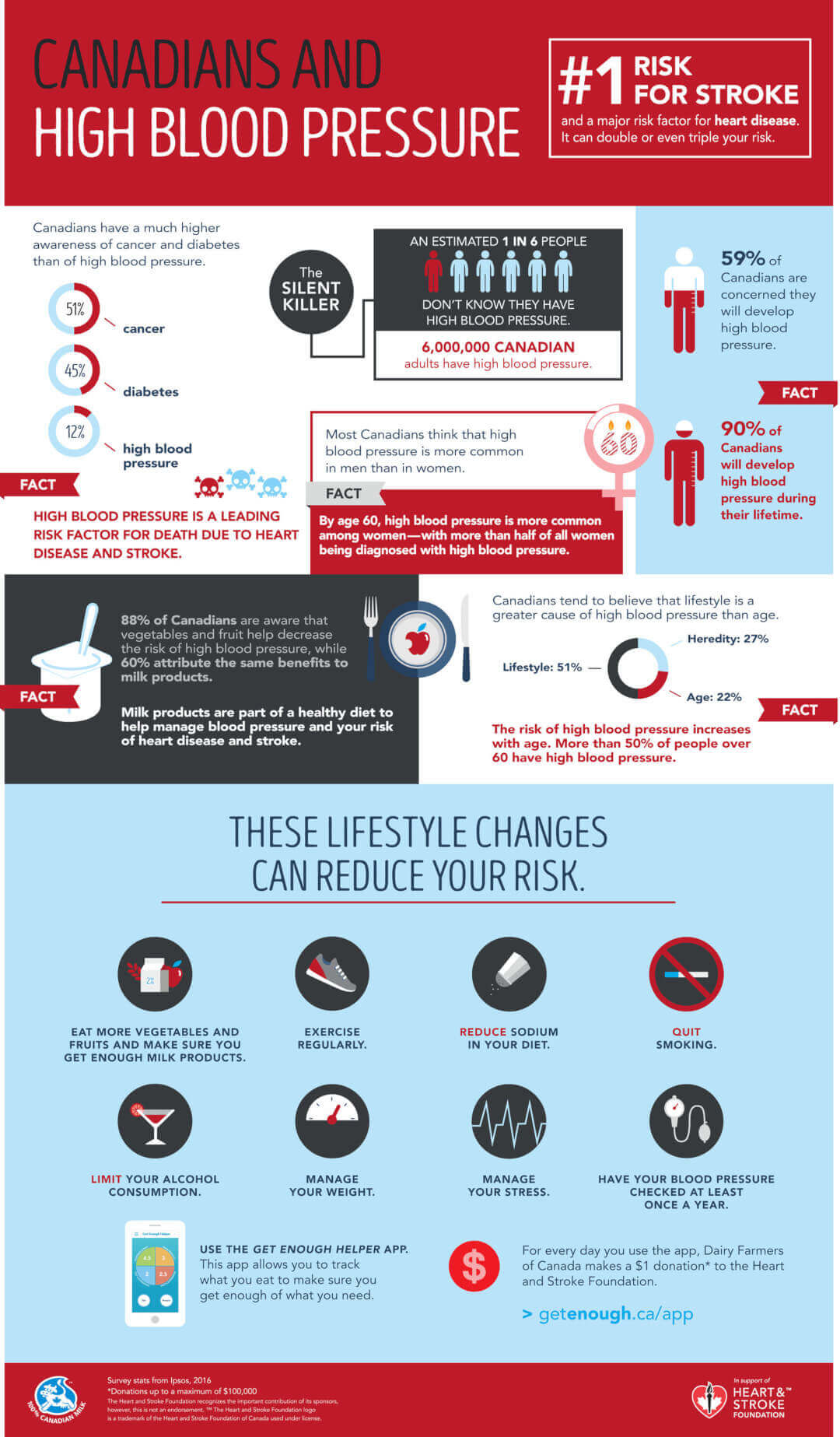
There is no accepted scientific consensus to show that milk is required to lower your risk of blood pressure. In very small print, one can read the disclaimer:
The Heart&Stroke Foundation recognizes the important contribution of its sponsors, however, this is not an endorsement
We are very conscious at the Vegan Society of Canada of avoiding, at all costs, conflict of interest. Our charitable purpose and our vision are our primary and only objectives, and we do not allow the use of our logo for any reason other than certification; we do not allow advertisements, we do not allow sponsored content, we do not accept large donations from organizations that make money out of activities that conflict with our vision. Donors give out of generosity and only get nominal benefits, in accordance with charitable regulations, as generosity should always be the primary motive in charitable giving. The Heart&Stroke Foundation was joined by others like Osteoporosis Canada and Colorectal Cancer Association of Canada in this unethical campaign with each of their campaigns seemingly more outrageous than the next. Carly Weeks, Health Reporter for The Globe and Mail, was right when she stated in her article that there would be a public outcry if this were to happen in any other industry, like a carbonated beverage.
The influence of animal agriculture lobby has a farther reach than what we’ve outlined in this article. In future articles, we will explore how through all of this we ended up with an highly inflated and misleading recommendation for calcium. Moreover, we will show that higher calcium recommendations are not isolated to Canada and can be observed in other countries where animal agriculture has strong lobby groups.
We want to be very clear: all the information presented here is factual but there is no proof linking all of it together. These things could all be coincidence or isolated incidents and have nothing to do with each other. We are strong proponents of using the best science available and it is a core value of our mission. Part of the scientific method includes making a hypothesis and connecting dots that are otherwise unconnected in an effort to advance our understanding.
There is simply no way for us to gather some of this proof as many of the organizations mentioned are private, and while they may be acting unethically, they are not breaking any laws and they are definitely not sharing information publicly. We do not receive billions of dollars in subsidies so we can conduct our own research and investigations. Therefore, we ask that you look at all the unconnected dots we presented here and decide for yourself.
Animal agriculture brings little to no benefit to our society and is the cause of many problems, including being a major cause of climate change along with the suffering and killing of countless animals, including human animals. Joins us in making animal agriculture something future generations will read about in history books.
A change of lifestyle offers individuals a powerful means to combat a range of issues, including personal health problems, climate change, loss of biodiversity, global acidification, eutrophication, freshwater shortages, pandemic prevention, antibiotic resistance, save countless lives and much more. We know of no other efficient way for individuals to address these critical challenges simultaneously without waiting for government, corporate, or technological interventions. By changing lifestyle, people can take immediate and impactful action. We encourage you to embrace this lifestyle change today. Contact us for support and to connect with local communities in your area.
